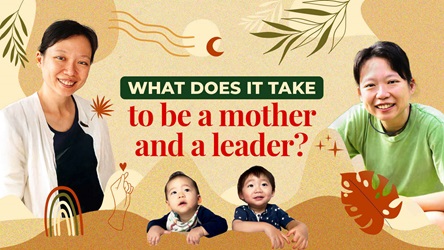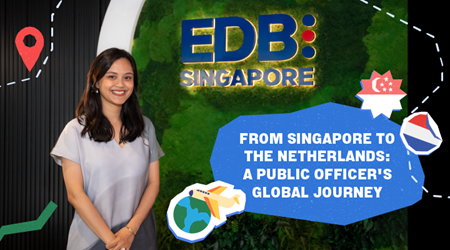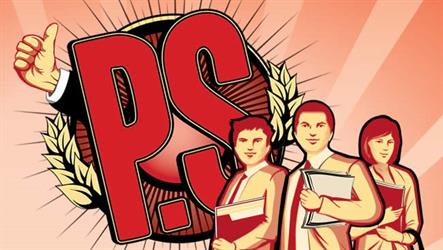"It's About Giving Back" Kenneth Er On Being A Nurturing Leader

Mr Kenneth Er can talk about trees all day. He doesn’t mind getting his hands dirty, and loves being amongst flora and fauna – in fact, it’s very much a part of his job as the CEO of National Parks Board (NParks).
At Halia restaurant in the Singapore Botanic Gardens, he shares with Challenge the science behind tree planting and why he has a soft spot for some tree species. His enthusiasm is clear as he extolls the virtues of the rain tree, a transplanted species from South America that is now – in his words – a permanent resident.
“A rain tree isn’t just a tree,” he says. “It’s a microhabitat. A healthy, large, mature tree may be home to 20 species of plants. Have you ever seen a yellow rain tree? The yellow is due to a genetic variation, which gives it an autumnal feel.
“It’s a beautiful tree,” he concludes. The beauty of nature, how it makes Singapore a much more liveable city-state, and maintaining a sustainable Garden City are some of the deeply rooted themes that intertwine in Mr Er’s personal and professional lives.
Growing up, one of his favourite activities was bird-watching, which had him traipsing up and down the trails of Bukit Timah Nature Reserve.
“I would have been very happy just being a wildlife photographer,” the 42-year-old recalls, “or just to have been able to study birds – that was what I wanted to do.”
Now if you ask Mr Er’s children – he has two daughters, aged 7 and 10 – about his profession, they would say, matter-of-factly: “Daddy is a gardener.”
Giving back
These days, Mr Er’s wife doesn’t like him to drive: behind the wheel, he tends to spend more time observing the trees – many of which he had planted – than he does watching the road.
The Public Service Commission scholarship holder had pursued a degree in forestry despite his parents’ doubts.
Others questioned if Singapore had forests worth studying or managing. (The answer is yes, according to Mr Er, because we have original, pristine forests as well as urban forests.)
Undeterred, he stuck by his choice. “I just knew I wanted to study ecology, to be with nature,” he says. “Nature is a wonderful thing, it brings people together.
“It never dawned on them,” he continues, referring to those who had questioned his choice, “that greenery would become a key factor in cities of the future becoming highly liveable.”
When Mr Er first joined NParks, he was appointed the manager of Kallang, taking charge of parks and streetscapes within a zone from Dunearn Road to Kallang Riverside Park. He inspected and monitored the trees and plants, parks and playgrounds, as well as interacted with the community.
Since then, he has spent 18 years in various appointments within NParks and the Ministry of National Development, and a stint as the first Chief Operating Officer of the Gardens by the Bay.
Now, returning as the organisation’s CEO (“It was like coming home, because I ‘grew up’ in this place”), it is his turn to nurture the staff.

“Professionally, I grew and learnt a lot from various people,” he says. “I was nurtured by my previous supervisors, my CEOs; and now that I have amassed this knowledge, it’s about giving back to the organisation.”
He shares that he learnt from his years of working with former NParks CEO Dr Tan Wee Kiat the importance of balancing ecology with aesthetics. This means ensuring not only that the plants and trees thrive but that they also enhance the beauty of the area.
The spirit of constant learning is something he hopes to impart to his staff. “You must not stop for one moment, or feel that you know everything” says Mr Er, who often emails his staff the latest on horticultural innovations.
Equalising with greenery
On the anticipation surrounding the Singapore Botanic Gardens’ bid to be recognised as a UNESCO World Heritage Site, Mr Er says: “Not many people know this, but the Botanic Gardens played a very key role in the establishment of Singapore as a Garden City.”
In the ’60s, the Botanic Gardens – already a leading centre for botanical research – became a living laboratory for determining the kind of species that would thrive in an urban environment. A School of Ornamental Horticulture was also established in the ’70s to train personnel to maintain the green city.
Beyond the aesthetics, Mr Er agrees that greenery has been a great equaliser of society. Conscious urban planning allows everyone – regardless of their background – to have access to greenery, parks and gardens. This is why NParks has been increasing the social programmes for people to visit these parks.
All in all, it offers more than 2,500 programmes – pet-related activities, artistic performances, and more – across its many parks and gardens.

“We want to strengthen our programmes, and increase our level of contact, because we want these parks to become lively spaces, and attract more people to visit,” he says. “They can then better appreciate how liveable Singapore is.”
Mr Er’s passion for greenery and photography has translated into greater social media interaction. He told staff, with more than 350 parks and 4,000 hectares of nature reserves, surely they could get “fantastic photographs” and share them with the public. NParks’ social media accounts regularly hold photo competitions and share about the flora and fauna found here.
And if NParks intends to better incorporate its parks with the urban landscape, it needs to maintain the public’s trust and continue to engage their interest, he adds.
“In my time with NParks, we’ve always engaged with the public… We work with residents and try to incorporate feedback into what we do. We’re currently in the midst of our Jurong Lake Gardens engagement, and it’s something we do wholeheartedly.
“There’s no shortcut.” The man, who brings out the best in his plants, wants to do the same for his staff. His advice to younger public officers is they must first enjoy their work, and “believe that what they’re doing contributes to Singapore”. Mr Er encourages them to continue learning and develop their skills, as soon, it would be their turn to nurture others.
“If I can touch every staff this way, then I think we can continue to sustain our City in a Garden.”

What's in your cuppa?
Kopi C.
Where do you take it?
Food Canopy at Raffles Building in the Singapore Botanic Gardens.
- POSTED ON
Jul 1, 2015
- TEXT BY
Yong Shu Chiang
- PHOTOS BY
Norman Ng









